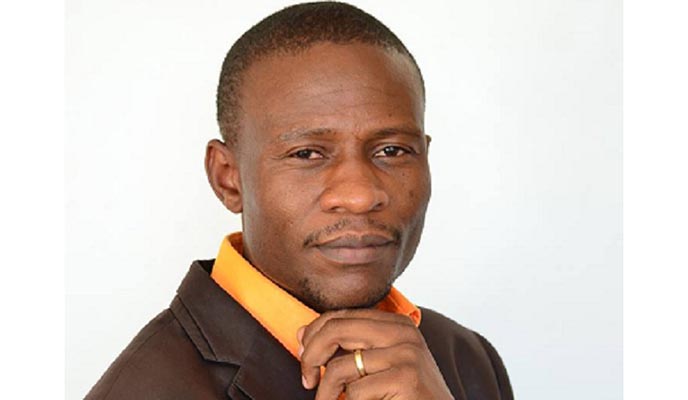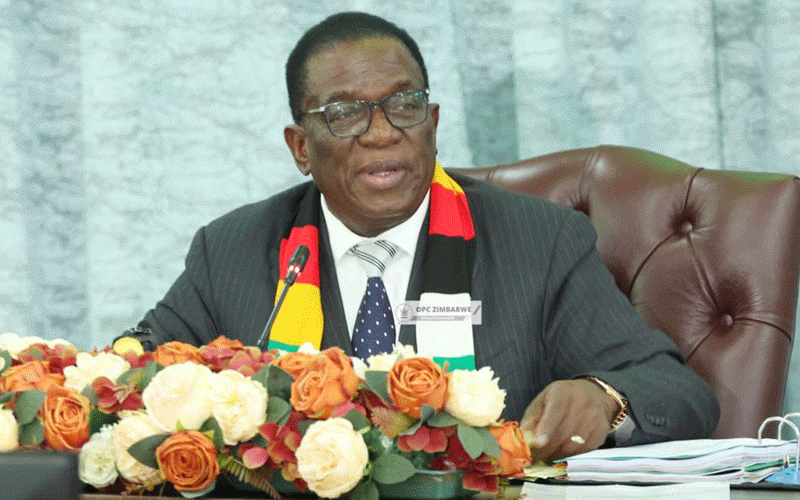
The success or failure of any organisation is brewed in the boardroom, where leaders converge to bring out ideas to move the organisation forward.
By JONAH NYONI
These dynamics are the fulcrum for every organisation. I (JN) engaged Denis Sartain (DS) the co-author of the book Coaching Essentials.
Sartain is a leadership development specialist, specialising in leadership, team development and executive coaching.
He is the founder of International Coaching and Development (ICD) and a visiting executive fellow and associate client director at Henley Business School
JN: What is boardroom dynamics?
DS: The first principle of boardroom dynamics is that we know that people who get together in a boardroom are aware that they get together for positive reasons. That is to achieve the objectives of the board.
What then happens is, when any group of people comes together, we get a dynamic that wasn’t there before they got together.
- Chamisa under fire over US$120K donation
- Mavhunga puts DeMbare into Chibuku quarterfinals
- Pension funds bet on Cabora Bassa oilfields
- Councils defy govt fire tender directive
Keep Reading
For instance, if the chairperson of that board was to meet with one member of the board one-on-one, they will have a particular interaction.
But the minute another person joins the meeting or another two or three people join the meeting, the dynamic changes.
That means that the chairperson and that other person now have an audience.
Whenever you have an audience, the question you ask would be: Is the way you act in front of one person, the same way you act when there are several people observing you?
So, the dynamic that takes place with the chairperson, who conventionally is the most senior man or woman in the room, is an undercurrent how people approach him/ her.
One of the key elements in the boardroom is for the chairperson to be aware that he or she will have this effect on the board members.
So, the job of the chairman is to get everyone as open and contributing as they can possibly can be and to allow them to speak freely and open and not withhold information because they feel there is a power distance that people might think badly of If they have a wrong opinion.
So, the chair’s job is to first establish those rules.
JN: As a chair, how do I handle a scenario where someone in the board is more powerful than the chair and most people listen to him more than the chair?
DS: What we should be looking at is the reason why the board gets together.
It’s to get together as to use its collective wisdom so that everyone in the room can contribute towards the ultimate goal.
There should be no individual advantage in a room, there should be no power struggles, there should be not favouritism, because it’s about collective wisdom.
So, what you will try and do if someone thinks they will have an advantage over someone in the room is to try and delete that from boardroom scenarios. It’s not about politics.
It’s about how we can achieve as a group the most effective outcome for our organisation, for our people, for our group.
If you recognise that there is politics, you must address that because that’s not what the board is for.
JN: What behaviours are required to be a successful board?
DS: The best behaviours are to, first of all, at the beginning of every board meeting, is to listen to your fellow board members.
To give them equal time.
Ask for their views and for everyone to have a view.
And if the chair notices that members are not giving their views, he has to simply ask them why?
JN: How does the leader change the negative attitude in the board?
D.S: The first thing to remember when you get to a boardroom is that there should be a conducive and positive atmosphere for ideas to flourish.
There is a frustrating experience that some new CEOs, or new managing directors face when they inherit a board.
They come into an organisation and start to run a meeting and they notice the people are not speaking up.
Or there are some people that dominate the discussions.
Very often, they are inheriting the style of the last person who was in charge.
Sometimes, there are some people who are in charge, who don’t want to hear your opinion unless it agrees with theirs.
They shut down disagreement.
They don’t encourage new thinking, but the most modern and current way of addressing any kind of meeting where you are calling a number of people together, is to hear what they have to say.
That’s the whole purpose, that’s the jobs of the person who is in charge.
They should encourage people to give their ideas, and not to shut them down.
Very often, you can inherit someone else’s agenda and it takes a little bit of time to let the people know that there is a new way of thinking; which is to give views and support it with evidence and reasonable arguments.
If you can do that every view is valid and has merit.
JN: How do we balance a scenario where the younger leader brings a new way of disruptive leadership and there is one who is stuck with old paradigm?
DS: It’s about how you bring new ideas into an organisation that has been in existence.
Any group or institution, which is used to an old way of thinking, when a new idea comes in, it may or may not have merit.
The best way to approach it is on the basis of what supporting evidence there is and what the robustness of the arguments.
So the best way is to approach it with an open mind rather than to having to make people prove things against a prejudice or against a bias.
And if the board or the person in charge can satisfy themselves that they are actually appreciating new ideas and not trying to obstruct them, that’s kind of a fair process for any group to have.
It’s not an obstructionist approach, it’s needing information before you accept it.
Sometimes, when people come up with new ideas, they may feel they are being rejected simply because people are asking for information before they accept them. So there is a bit give and take on both the attitude you have when you hear new ideas.
Are you seeking to genuinely understand them or are you trying to reject them?
Likewise, when you present new ideas, do you view someone who questions them as someone who wants to oppose them or someone who simply is asking you to give more information.
There is always that fine line.
At times, people are a little bit sensitive and touchy about people not accepting things immediately, but it’s about being fair and objective.
JN: How important is boardroom culture, and how does it influence decision making?
DS: It’s absolutely critical, because what happens in the boardroom is a reflection of what happens in the whole organisation.
If you have an atmosphere where people feel that only certain things are acceptable and its only acceptable if you agree with what the chair says, if an argument is shut down and new ideas rejected, the whole organisation comes to a standstill.
There is plenty research now that supports that.
We had a financial crisis, because the people on the board were unwilling to challenge people who had power in the organisation.
So, even when people saw the organisation doing things that would lead to certain disaster, they felt unable to disagree with people in power on boards.
You can see this at commercial level and at governmental level, where people don’t listen to those around them for genuine and sound advice.
That can lead to a national disaster.
JN: How does a leader measure the effectiveness of their board?
DS: Some of the ways that the one leading the board can measure the effectiveness is to make a note as the meeting progresses as to who has contributed to the different items on the agenda and to notice if there are any people who are dominating the discussion.
If there are those who never say anything, or there are people who tend to just support other points of view?
Is there an honest open discussion?
And that’s the things they should take time to notice.
Secondly, the chair should also know the politics that could be there, especially before the meeting because the quality of the input will be influenced greatly by politics.
By politics, I mean if people bring in agendas other than the one you are discussing in the boardroom.
So, do they feel like they will be punished for a wrong point of view?
Is there a wrong point of view?
Is there a right point of view?
Do they have to support other person’s point of view?
So, the chair can actually start to notice those things and notice the quality of the input based on that very often take place in boardrooms; those are the boardroom dynamics.
Someone in a position like that should get external help to discuss it, examine it and to help the board to deal with their own dynamics. Some externals can actually help them to facilitate the process.
Coaching is an excellent method that could be used to deal with objective ways of approaching subjects and helps people to articulate their thoughts.
Very often, facilitation skills are actually coaching skills that help groups in boards to discuss in a more effective way.
You can bring someone with facilitation or coaching skills to help a board achieve their purpose, which is the collective wisdom and the good of the organisation
lJonah Nyoni is an author, success coach and certified leadership/business trainer. He is the author of Inspiration for Success and Success Within Reach. Contact details: Tel: 0772 581 918. Email: jonah@classicmail.co.za. Twitter@jonahnyoni.











